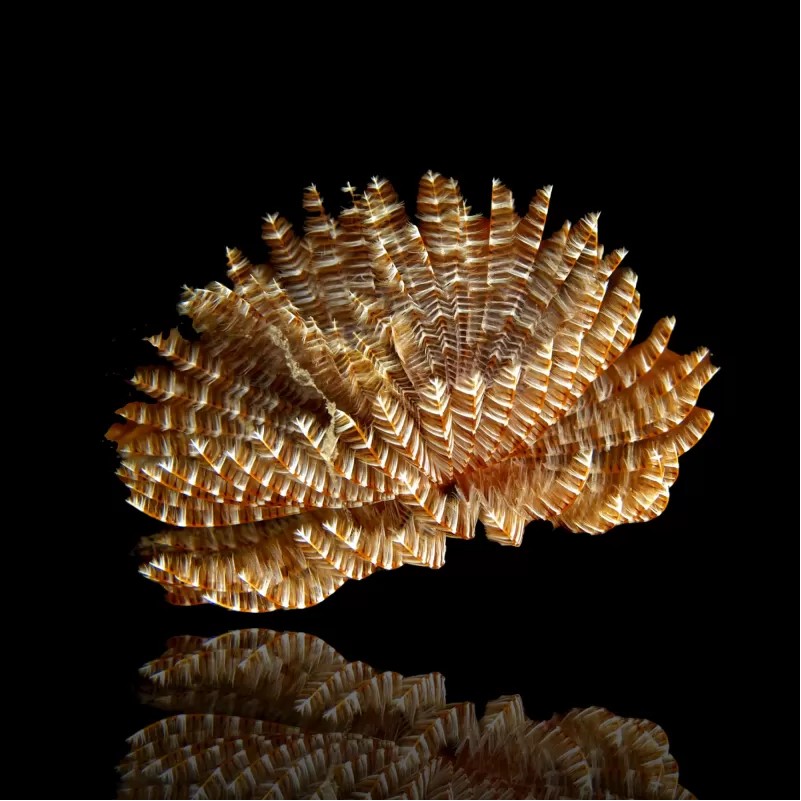Sabellastarte Indica - Feather Duster - Indian fan worm
Sabellastarte indica, commonly known as the Indian fan worm or feather duster worm, is a marine polychaete worm in the family Sabellidae. Known for its graceful, feather-like crown, it is a fascinating and ecologically significant species often seen in tropical and subtropical marine environments.
Taxonomy
- Kingdom: Animalia
- Phylum: Annelida
- Class: Polychaeta
- Order: Sabellida
- Family: Sabellidae
- Genus: Sabellastarte
- Species: Sabellastarte indica
Physical Description
-
Body:
- Encased in a soft, flexible, parchment-like tube that it builds from secreted mucus and sediments.
- The body is segmented, but this is rarely visible as it is typically hidden within the tube.
-
Radiolar Crown:
- The most distinctive feature, composed of feather-like tentacles (radioles) arranged in a circular or semi-circular fan shape.
- The crown is often vibrantly colored, displaying patterns in shades of red, brown, orange, white, or purple.
- The crown functions in both feeding and respiration.
-
Size:
- The crown can extend up to 10 cm (4 inches) in diameter, while the worm's body may reach lengths of 20-30 cm (8-12 inches), mostly hidden in its tube.
Distribution and Habitat
-
Geographic Range:
- Found in the Indian Ocean and other tropical to subtropical regions of the Indo-Pacific.
-
Preferred Habitat:
- Inhabits coral reefs, rocky substrates, sandy or muddy bottoms, and man-made structures like piers or ship hulls.
- Often found in shallow waters but can live at greater depths in suitable conditions.
Behavior and Ecology
-
Filter Feeding:
- Extends its radiolar crown to capture plankton and suspended organic particles from the water column.
- Uses cilia on the radioles to transport captured food to its mouth.
-
Respiration:
- The radioles double as gills, facilitating gas exchange.
-
Defense:
- Retracts its crown rapidly into its protective tube when disturbed or sensing predators.
Reproduction
-
Sexual Reproduction:
- Gametes are released into the water column for external fertilization.
- The larvae are planktonic and eventually settle on a substrate, where they grow and build their protective tubes.
-
Regeneration:
- Capable of regenerating lost parts, including damaged radioles or sections of the body.
Aquarium Care
- Lighting: Moderate; does not require intense light, but the aquarium should mimic its natural environment.
- Water Flow: Moderate to strong water currents to deliver food particles efficiently.
- Water Parameters:
- Temperature: 24-27°C (75-81°F)
- Salinity: 1.023-1.025 specific gravity
- Stable pH and low nutrient levels are critical.
- Feeding: Requires supplemental feeding with fine particulate foods, such as phytoplankton or marine snow.
- Tank Compatibility: Peaceful tank mates are essential, as it is a non-aggressive species and can be harmed by fish or invertebrates that pick at its crown.




